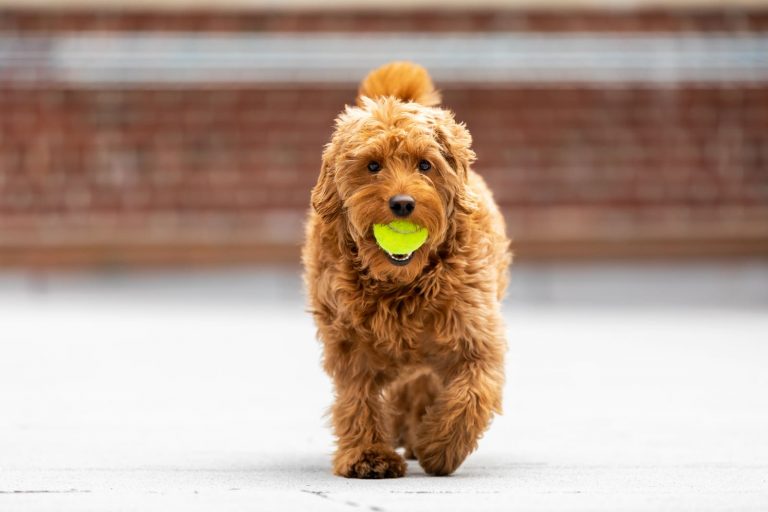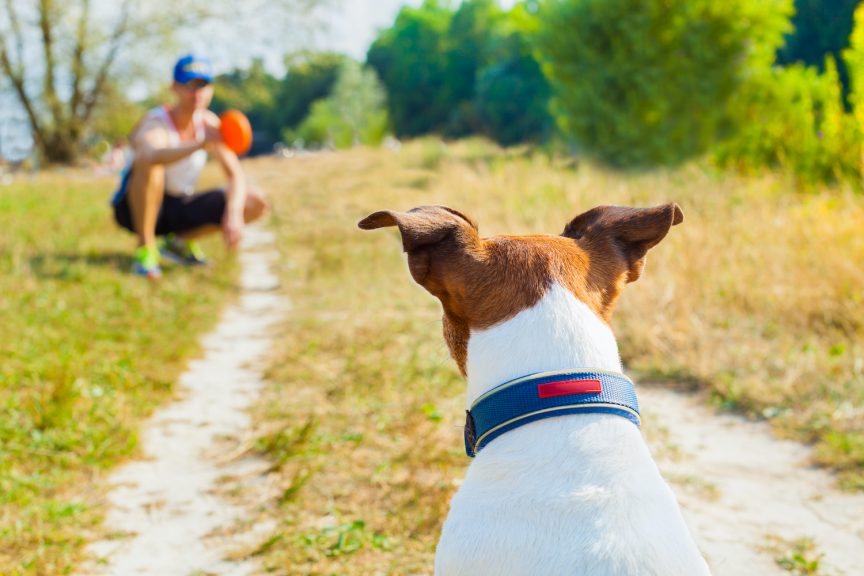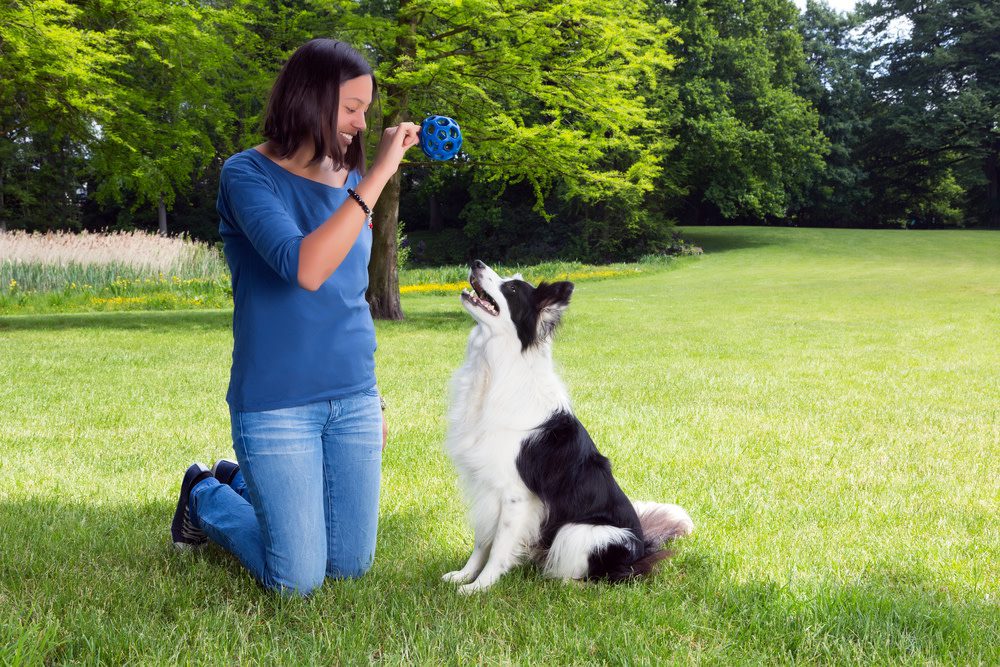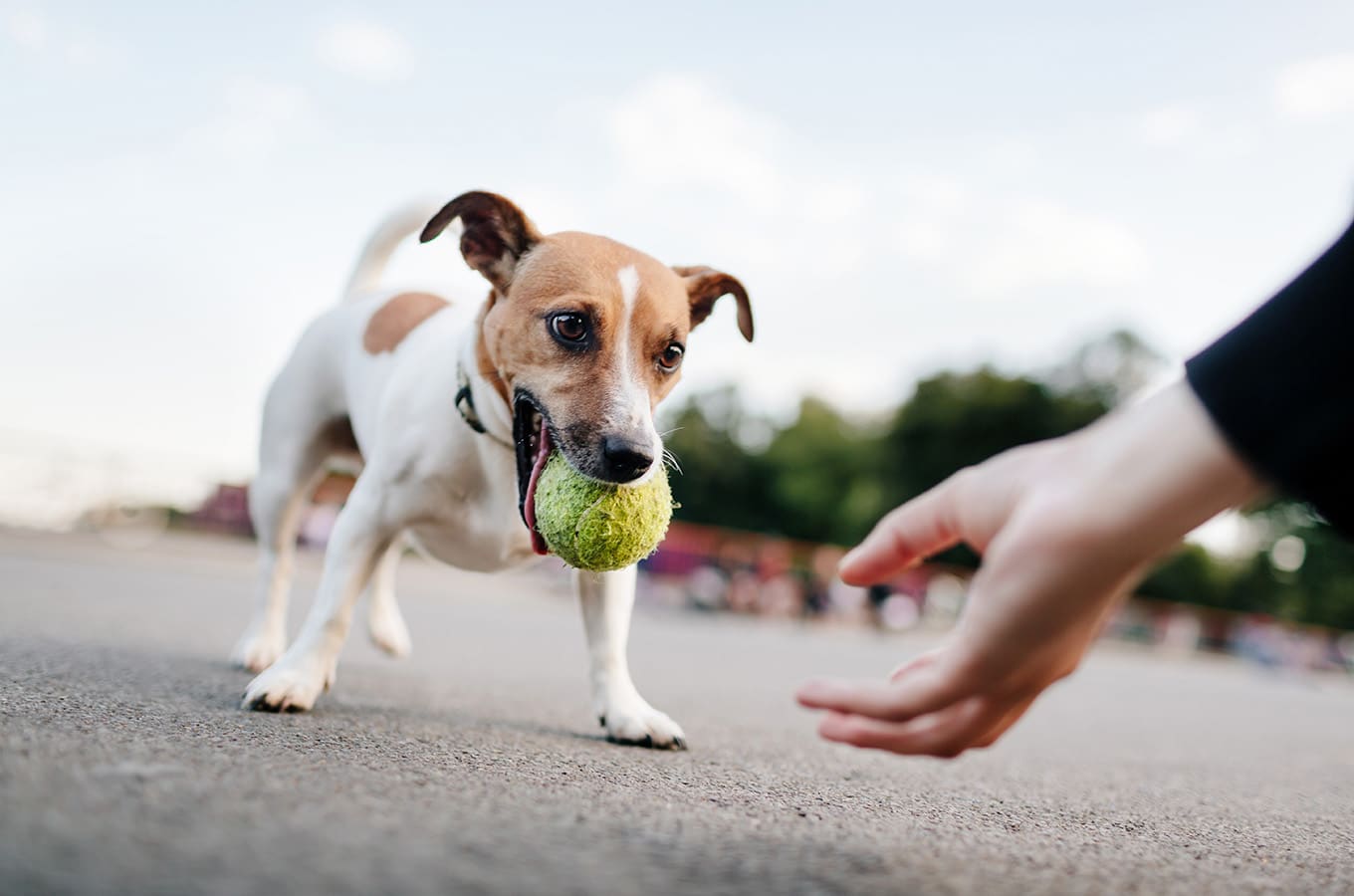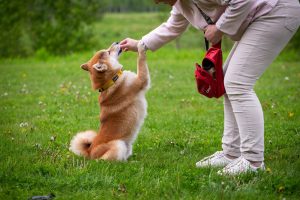There are plenty of dogs that will happily run after a toy your throw. Yet, not all of them will bring it back as enthusiastically. Some might pick up the toy and make you chase them as part of the game. While not all dogs are Retrievers, the reality is that most of them can be taught how to bring something back.
Today, we will talk about how to teach a dog to fetch. Yes, some breeds have a natural instinct for it, like a Labrador Retriever, a Golden Retriever, or similar breeds.
What is important to remember is that fetch is a game. It is not a trick. It is not a command you give. So, the next time you go playing fetch, consider that. Your pup has to be interested and engaged. There are other forms of exercise and play you can try like tug, chase, and many more. The important thing to remember is they are games but also help with mental stimulation.
What Do You Need For Teaching Fetch?
Because fetch is a game, we have to start by saying you need some basic ingredients for it. Or basic tools. Here is a quick summary:
- Your dog’s favorite toy
- Small high-value training dog treats
- A treat pouch
- And a clicker or a marker word, for example, yes
Before you can teach your dog to fetch, it is important that your dog understands the concept of coming when called and leave it.
The Best Method for Teaching Fetch
Now let’s get to the important part. And that is how to teach a dog to fetch. As we said before, the first thing is finding a toy that your dog loves. It can be any toy. The big mistake many owners make is they think you have to play fetch with a tennis ball.
It can be any toy, as long it is one that motivates your dog. That can include a plush toy, a Frisbee, a squeaky toy, or anything your dog loves.
Step 1 – Introduce the toy
When you pick a toy, it is time to get your dog motivated and excited about it. How can you do that? Here are some pointers:
- Place the toy near you and when the dog comes close to it, mark with yes, and give a treat
- When the dog touches the toy with its nose, praise and give treats
- Continue until your dog loves interacting with the toy
- Increase excitement by moving the toy around it so the dog will chase it
At this point, you do not want to throw the toy. Or move it far. Just hold it in different positions and encourage your dog to touch it.
Step 2 – Get Your Dog To Grab It
Now it is time to move the fetch game to the next level. And that is allowing your dog to grab the toy with its mouth, and reward for it. It will take a bit of patience on your side. Watch your dog’s behavior and reward when your puppy shows the behavior you want.
For example, place the toy on the ground, and if your dog begins using its mouth, praise and mark, and then reward.
Step 3 – Introduce The Concept Of “Drop It”
The last part of retrieving a toy is dropping it, right? Well, you do not always teach the last part as the last step. Your dog has to learn and understand the concept of drop command before you can teach fetch.
Give your dog the command to take the toy, wait three to five seconds, and give the command to drop it. Most dogs need help with dropping it for the first time. Hold a dog treat near its nose to make your dog drop the toy. And once the toy is back on the ground, reward it with treats.
Step 4 – Throw The Toy At A Short Distance
By this point, your dog should know that when a toy is in its mouth, he gets a treat. And when he drops it, he gets a treat as well.
So, begin with a short distance. When your dog picks up the toy, praise and give treats. Then call him back, and wait for him to drop the toy. Reward again.
Continue adding distance and reward only when the dog brings the toy back to you and drops it.
Step 5 – Add A Verbal Cue
When your dog masters the concept of fetch, you can add a verbal cue. You cannot do it before. There is no point in adding a command or cue for something your dog doesn’t yet understand.
Now, the trick is to say the word before throwing the toy. You can make it any word you want. Some people go for “fetch”, others for “bring it”.
We can safely say that by this point, your dog already enjoys the game even without a verbal cue.
Tips For Successful Training
We have to note that not all dogs are natural for this game. And some will take more time to get to the end goal. Yet, if you follow our guide and use positive reinforcement dog training methods, we can guarantee success. Here are some tips to help you navigate to the end goal.
- Teach the command to drop it in a narrow hallway. This will prevent your dog from running and give little space for it. That makes it easier to learn the “drop it” command
- Start by throwing the fetch toy at a short distance
- Try the concept of chasing the toy to get your dog excited about the toy. Encourage the dog to play with the toy, and when he grabs it, take the object away. Repeat a few times, and then toss it at a short distance
- For extra motivation, have your dog in a sit/stay position and hold him back after throwing the toy. Your dog will naturally tug against you, and once you finally let him go, he will go after the object
- Add a loose leash to prevent your dog from running off with it. Just wriggle the line and pull it towards you when the dog has the object of interest
What To Do If Your Dog Doesn’t Drop The Toy?
The game of fetch is basically go after the fetch toy –> come back to me –> drop it. And then all over again. Yet, some dogs do not drop it at the end of the game. What can you do?
A simple trick is to walk away and pretend you are doing something else. This will signal to your dog that the game has ended. And it is not fun for your dog anymore.
Once your dog drops the dog toy, you can restart the game.

